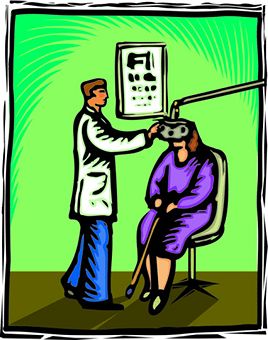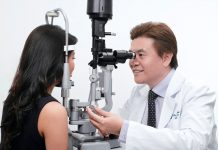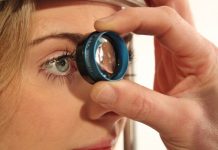The eyes are perhaps the most important of all the sense organs for a human being. Without the eyes the entire way in which we perceive the world around us changes. What is astigmatism of the eye? It is an eye disorder in which defects prevent the light from focusing on the retina properly, making vision at any distance blurred.
This means that the person is unable to see any object clearly, be it close or far away. There is also a problem with eye strain and the person may find it difficult to drive at night due to this blurred vision.
The types of astigmatism of the eye
Astigmatism of the eye is essentially of 2 types, namely corneal astigmatism and lenticular astigmatism. In corneal astigmatism, the cornea which is a transparent tissue layer that protects the front of the eye is imperfectly curved.
This means that half of the cornea is flatter than the other side making it difficult for the cornea to transmit and focus light correctly into the eye.
In lenticular astigmatism the problem lies not with the cornea but with the lens. The imperfect curvature of the lens makes the images hat reach the back of the eye on the retina imperfect.
This type of astigmatism is often caused by high blood sugar levels as patients suffering from diabetes tend to have. The problem is usually controlled through treatment for diabetics and the lens may regain its shape going from distorted to normal.
Symptoms of astigmatism of the eye
Mild astigmatism can be asymptomatic, which means that the defective cornea or lens does not affect the person’s vision to a great extent. It is only when the level of astigmatism increases that the physical symptoms become more noticeable.
The common symptoms of astigmatism (both types) include distorted vision at all distances, major sensitivity to light called photophobia, headaches, strain on eye and constant squinting to try and focus the blurred vision. People who have a precedent of getting migraine headaches should get their eyes checked for astigmatism.
Treatment of astigmatism of the eye
The eyesight disorder can be treated with eye glasses, contact lenses, and refractive surgery. The lifestyle and the level of astigmatism of the patient will be studied by the health care professional to determine which treatment option would be best suited. While eyeglasses with varifocal lenses are the most simple, safe and cheap method to correct the astigmatism, many prefer contact lenses for their sharper correction and better aesthetics.
In orthokeratology, a rigid contact lens is fitted in the eye to reshape the cornea so that the outer transparent cover of the eye is able to retain clear vision. These contact lenses are worn for limited periods of time and then removed in a measure to correct the shape. Surgery is usually the last option considered. In refractive surgery the shape of the cornea is changed permanently. The change in the cornea shape helps the eye to focus the light appropriately, making its vision better.













